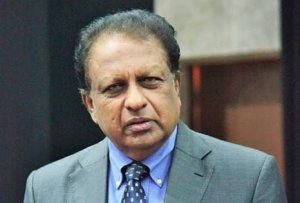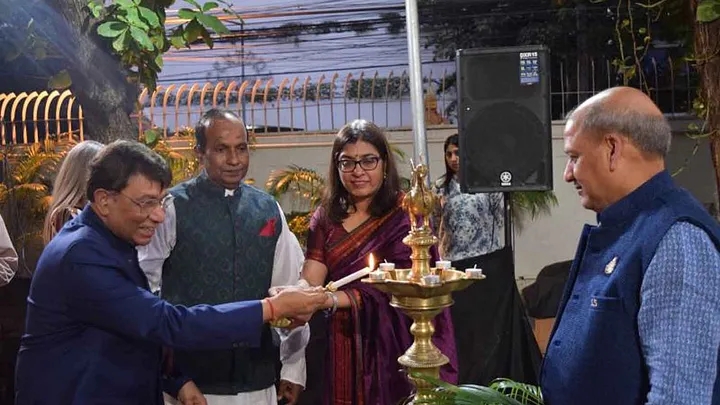
COVID-19: India’s Diaspora Challenges
 File photo of Indian diaspora in Bangladesh
File photo of Indian diaspora in Bangladesh
For a nation, which prides itself on having a diaspora empire on which the sun never sets, the present global pandemic is a reminder of the trials and tribulations of past empires, which crumbled under the weight of their own wealth, glory and responsibilities.
The Indian diaspora has been a source of remittances, technology and intellectual power. Ever since the Indian economy was liberalised and began to grow at a rapid pace, the prosperous diaspora in the developed countries and the massive number of migrant workers in the Gulf became the back bone of the Indian economy.
Gulf billionaires struck the British empire back by acquiring iconic institutions like the East India Company and Scotland Yard. The total assets of the 30 million strong Indian diaspora are estimated to have exceeded India’s GDP and India could bank on their support internationally in political and economic matters.
Today, the India-diaspora relations are on the verge of an unprecedented crisis because of the Coronavirus, which threatens the world, particularly the very countries where the people of Indian origin have worked and prospered.
A reversal of roles is likely if the majority of the 30 million people scattered all over the world turn to India for support, instead of giving generously to India.
Added to this is the real danger of loss of lives among the diaspora, resulting in cases of deprivation and misery. Unless the spread of Coronavirus is halted and the world economy recovers, India will have a gigantic burden on its hands.
With the growth of nationalism in different parts of the world and diminishing international cooperation, India cannot count much on external help. The United Nations itself remains paralysed on account of the arrogant approach of China. Kerala will be particularly affected as many of the people who are likely to be affected will be from the state.
Looking back at the history of the growth of the diaspora, it will be seen that the various waves of migration out of the country were unorganised and ad hoc. Individual initiatives in the quest for jobs and prosperity resulted in the migration of various professions in demand in the developed countries from time to time.
It was considered brain drain at one time, but it became brain gain because India had enough intellectual power to spare. With the opening of the United States for migration, Indian professionals flocked there in spite of the travel restrictions and became immensely prosperous in a relatively short period.
The Indian population in the US grew exponentially along with the growth of technology, which became a near monopoly of Indians. None of these migrations took place as a part of any national plan and the Indian population grew without any statistics being kept on them. Only a fraction of the Indian nationals is registered with the Indian missions.
The opportunity for workers, particularly semi-skilled and skilled workers which arose in the Gulf region was also unplanned and unexpected. The Indian workforce grew rapidly as a result of individual enterprise, including unscrupulous agents, who exploited them.
But most migrants were able to earn much more in the Gulf than here and there was a continuous flow of workers towards the Gulf and remittances inwards, transforming the Indian economy. Much of the money was wasted on unproductive expenditure like purchase of property and building of mansions in the absence of any plan for long term investment.
Some of the migrants amassed considerable wealth and white-collar jobs were also created. The Gulf bonanza gradually attracted the attention of the Central and state governments and a mutually beneficial relationship developed between the government and the migrants. Bilateral relations between the Gulf governments and India developed on account of the reputation of the Indians for hard work and integrity.
India responded heartily to the requirements of the diaspora by creating the machinery in our missions abroad and in state capitals and Delhi and instituted the annual Pravasi Divas and Pravasi Samman.
Problems were ironed out as they arose and the mutuality between the government and the migrants became a saga of mutual respect and cooperation. The intervention of the government was very helpful in various ways and the richer migrants began investing in India on a massive scale.
Political parties vied with each other to cultivate the leaders of the Indian community, who, in turn financed them and gained advantages. Whenever the domestic laws demanded return of Indians, the government intervened either to retain them there or to give them grants or loans to resettle in India.
In other words, the Indians in the Gulf made their own contribution to the development of India and secured the privileges the state could offer. India went to the support of the diaspora when the latter faced difficulties in different parts of the world.
This was in contrast to the Indian policy in the earlier years of keeping hands off Indians abroad and merely rehabilitating them when they had to leave countries like Burma, the Caribbean countries and Uganda because of their internal laws. The change of policy came at the time of the military coup against the Indians in Fiji, when the then Prime Minister Rajiv Gandhi got the military government expelled from the Commonwealth in 1988.
COVID-19 arrived most unexpectedly on to this happy scene and, like a Shakespearean villain, turned everything topsy-turvy, bringing the main dramatis personae into confrontation with each other. It was precisely the spread of the Indian diaspora across the world that caused the initial infections.
The first case came to Kerala through an Indian student from the epicentre of the disease, Wuhan, and then Indians were spotted in the most unexpected places like Italy, Spain and Iran, who were anxious to return to India as expeditiously as possible.
If the flights were not suspended and the airports closed around the world, thousands of Indians would have arrived in India with or without the virus, causing an emergency in every sector. India still brought back our nationals from some countries, but the expectation exceeded India’s capacity already.
The way in which the affected Indians reacted to India’s inability to get them back quickly was ominous. A large majority of them went to the countries concerned on their own and nobody had expected that they would face such difficulties and it took India time to deal with the unexpected crisis.
But in case the virus persists even after the present lockdown, the pressure to bring our people back will become a Herculean task. India naturally will have to move mountains to bring them back from the Middle East and the United States, where the situation is deteriorating. One shudders to think of the great humanitarian crisis it will create if all Indians were to come back from the far corners of the globe.
An unfortunate aspect of COVID-19 is that it is seen in Kerala as an imported disease. Most cases were associated with the Indians and foreigners who arrived soon after the onset of the tragedy. Some of them went around socialising in their communities without their knowing that they were carriers of the virus. Some even deliberately did not disclose that they had recently come back from infected areas.
Even now, most infections are traced to the returnees. Each day, when the Chief Minister reports elaborately on the state of COVID-19, he mentions Gulf returnees as the source of new infections. Though these are facts, some are offended by this characterisation.
One mystery is that several returnees appear to have developed symptoms after they boarded the aircraft. Since the gestation period is long, this is not credible. But according to a social worker, who spent many years in the civil aviation sector, the poor upkeep of the low-cost planes flying in the region could be responsible for this phenomenon. She says that the sanitisation spray, which is mandatory for all flights is not done on these flights.
This story has no villains. The Indians abroad, at least the Indian nationals have every right to come back and India has every obligation to take them back. Mother India will definitely fulfil all its obligations to her children abroad.
The position taken by most countries in the world that everyone must stay wherever they are till the virus subsides will have to be respected. This is particularly important for doctors, nurses and health workers, who will be required even after the situation stabilises.
We are already hearing about India’s neglect and apathy for the plight of the Indian diaspora. But nobody can manage the biggest movement of people across the globe if everyone insists on returning at the same time.
It may be fair to the host countries and India if migrant workers continue to work diligently and receive proper compensation and respect in the countries they are in. They should never face the kind of problems that migrant workers in different states of India are facing today.
The hurry with which we brought back the much-needed Indian workers from Kuwait and Iraq on the eve of the first Gulf War was not relished by the local governments.
The countries complained that the Indians left when they were most needed and it took India some time to repair the damage and get our workers back into Kuwait.
Taking a cue from that experience, India should negotiate with the countries concerned to provide the Indian workers good medical treatment and other facilities. If their salary is maintained and they are given better living conditions, many of them may choose to stay back in the countries concerned.
If a mad rush to come home begins, the issues will be too complex to comprehend and tackle. The situation should be monitored and contingency plans made to avert a crisis.
